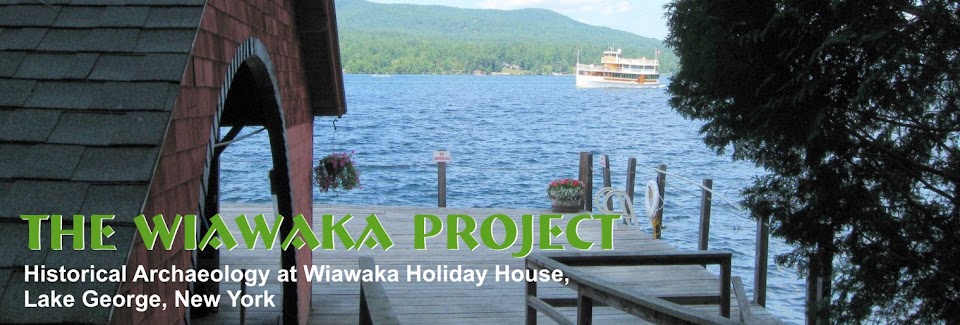Some early visitors to Wiawaka worked in the garment and textile factories of Troy and Cohoes, New York. The book, Maggie: Millhand and Farmer (Harrigan 2002) is an autobiographical description of life in and around these mills.
 |
| One of the Harmony Mills buildings, Cohoes, NY 2008. Photo by Daniel Case. |
After being fired from her salaried job at the Harmony Cotton Mills, Maggie gets piece-work employment at Murphy's Mill: "I was paid for the pounds that I would wind off the tubes that came in wooden boxes from the jackspinner's frames. Taking the tubes of yarn from the boxes and placing them in the shelf of the winder where they were easy to reach and by keeping my ends running, it was an easy matter to take off a good day's pay.... On the same floor with the winders were the knitting frames, and also the brusher machine. All were run by young men, expert knitters and brushers. The men that worked the knitting frames would go over into the winders alley and take what combs we winders had filled, then knit the yarn into heavilyt irbbed cloth. The large rolls of cloth were put through a large machine called the Brusher; then a fluffy nap was brushed on it named fleeced lines cotton. Other workers would take it down on the elevator to the cutting room where it was cut, to be sewed into shirts and drawers for men and women, by girls and women who ran the sewing machines on the lower floor." (Harrigan 2002:69)
Compare the weaving of cloth and sewing of garments that took place in a single mill in the early twentieth century with the global involvement in the manufacture of a single T-shirt as reported by National Public Radio. In a fascinating report, they traced the manufacture of a shirt from the fields the cotton came from to final product: Planet Money Makes a T-Shirt.
Source:
Harrigan, Margaret Sheridan (2002) Maggie: Millhand and Farmer. Edited by Kathleen M. Gill. Peckhaven Publishing, Saratoga Springs, NY.







